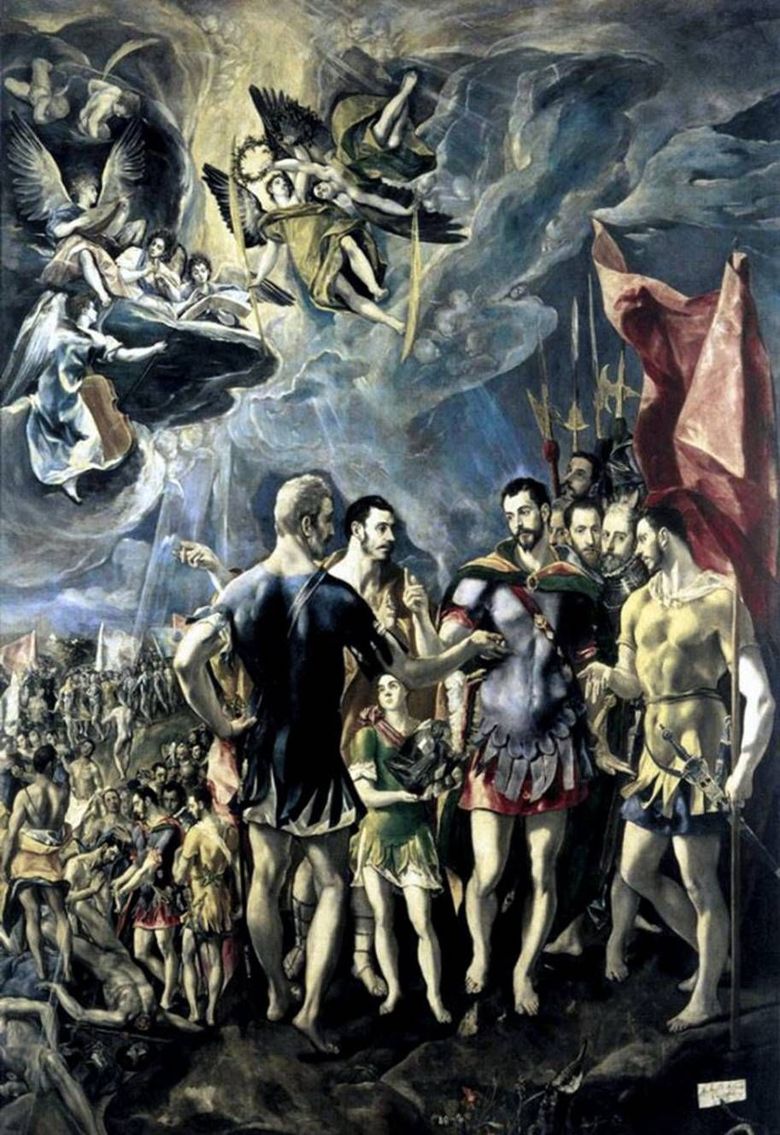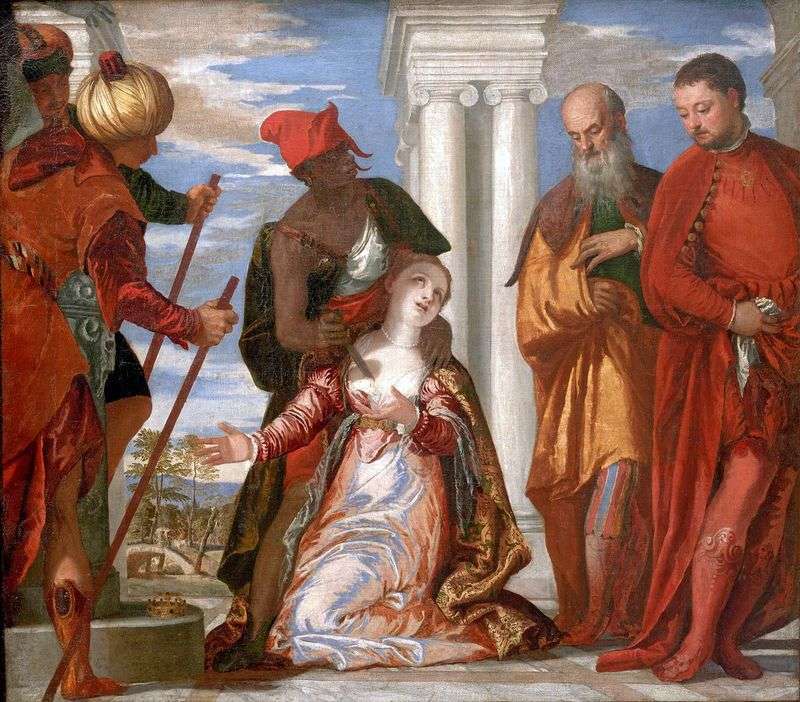
Painting of the Spanish painter El Greco “Martyrdom of Saint Maurice”. The size of the painting is 448 x 301 cm, canvas, oil. Sharply and consistently the visionary character of the art of El Greco was reflected in the painting commissioned by King Philip II for the Cathedral of the Escorial – “The Martyrdom of Saint Maurice”. In a very complex, rich in a multitude of figures, compositions are depicted, as in the works of medieval art, from episodic episodes from the life of a saint.
In the foreground of the painting are the figures of the commander of the Theban army of Mauritius and his companions, who are ready to accept martyrdom for being faithful to Christianity. They are represented in the armor of Roman soldiers; Plastic modeling of their figures is inspired by the techniques of classical painting. However, these images, in which the understanding of the human personality typical for El Greco was manifested, are infinitely far from the heroic images of the Renaissance. Their bodies are devoid of real weight, faces and gestures reflect emotional excitement, humility and mystical ecstasy, bare feet silently stepping on the ground. The image of the execution of Mauritius, the ascension of his soul to heaven, pushed aside by the artist, seems to take place in the sphere of boundless space.
In the painting “The Martyrdom of Saint Maurice,” the unusual coloring of the artist, imbued with the restless struggle of opposing colors, then brightly flashing and fading in a flickering ghostly unreal light, is one of the main means of mystical transformation of reality. So unlike the traditional works of church art, Greco’s painting was not appreciated either by Philip II, or the court masters of Italianism. Her place in the Cathedral of Escorial was given to the canvas of a mediocre Italian painter.
Disappointed by his failure at the court, El Greco left Madrid and settled in Toledo. Once the “heart of Spain”, the ancient Toledo in the 16th century became the home of the old feudal aristocracy. Having lost the importance of the state capital, Toledo remained the center of the Inquisition and theological thought. Toledan intelligentsia was fond of the ideals of medieval culture and mystical teachings. Her spiritual life, in which music, poetry and art occupied a significant place, was distinguished by great refinement. This environment was the most favorable for the development of El Greco’s talent.
 Immaculate Conception by El Greco
Immaculate Conception by El Greco Self-portrait by El Greco
Self-portrait by El Greco Worship of the Name of Christ by El Greco
Worship of the Name of Christ by El Greco Martyre de Saint-Maurice – El Greco
Martyre de Saint-Maurice – El Greco Toledo by El Greco
Toledo by El Greco The expulsion of merchants from the temple by El Greco
The expulsion of merchants from the temple by El Greco Resurrection by El Greco
Resurrection by El Greco The Martyrdom of Saint Justine by Paolo Veronese
The Martyrdom of Saint Justine by Paolo Veronese